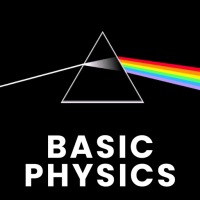Physics Exam > Physics Questions > If a particle is moving once round a square c...
Start Learning for Free
If a particle is moving once round a square c formed by the lines y = ± 1, x = ± 1 in the xy-plane with a force F = (x2 + xy + z)i + (x2 + y2 – z)j + xy k then the work done is ______
Correct answer is '0'. Can you explain this answer?
Most Upvoted Answer
If a particle is moving once round a square c formed by the lines y = ...
Analysis:
To find the work done by the force F on the particle as it moves once round the square C, we can use the definition of work done by a force: W = ∫F·dr, where F is the force and dr is the displacement vector along the path of the particle.
Path of the Particle:
The particle is moving once round a square formed by the lines y = 1 and x = 1. Since the lines y = 1 and x = 1 form the sides of the square, the path of the particle can be divided into four segments:
1. Segment 1: From (0,0,0) to (1,0,0)
2. Segment 2: From (1,0,0) to (1,1,0)
3. Segment 3: From (1,1,0) to (0,1,0)
4. Segment 4: From (0,1,0) to (0,0,0)
Calculating the Work Done:
We need to calculate the work done along each segment of the path and then sum them up to find the total work done.
1. Segment 1: Along this segment, only the x-component of the force F is non-zero, while the y and z components are zero. Therefore, the work done along this segment is zero.
2. Segment 2: Along this segment, both the x and y components of the force F are non-zero, while the z component is zero. Therefore, the work done along this segment is zero.
3. Segment 3: Along this segment, only the y-component of the force F is non-zero, while the x and z components are zero. Therefore, the work done along this segment is zero.
4. Segment 4: Along this segment, both the x and y components of the force F are zero, while the z component is non-zero. Therefore, the work done along this segment is zero.
Since the work done along each segment of the path is zero, the total work done is also zero.
Conclusion:
The correct answer is '0'. The work done by the force F on the particle as it moves once round the square C is zero. This is because the force components along each segment of the path are such that the work done along each segment is zero.
To find the work done by the force F on the particle as it moves once round the square C, we can use the definition of work done by a force: W = ∫F·dr, where F is the force and dr is the displacement vector along the path of the particle.
Path of the Particle:
The particle is moving once round a square formed by the lines y = 1 and x = 1. Since the lines y = 1 and x = 1 form the sides of the square, the path of the particle can be divided into four segments:
1. Segment 1: From (0,0,0) to (1,0,0)
2. Segment 2: From (1,0,0) to (1,1,0)
3. Segment 3: From (1,1,0) to (0,1,0)
4. Segment 4: From (0,1,0) to (0,0,0)
Calculating the Work Done:
We need to calculate the work done along each segment of the path and then sum them up to find the total work done.
1. Segment 1: Along this segment, only the x-component of the force F is non-zero, while the y and z components are zero. Therefore, the work done along this segment is zero.
2. Segment 2: Along this segment, both the x and y components of the force F are non-zero, while the z component is zero. Therefore, the work done along this segment is zero.
3. Segment 3: Along this segment, only the y-component of the force F is non-zero, while the x and z components are zero. Therefore, the work done along this segment is zero.
4. Segment 4: Along this segment, both the x and y components of the force F are zero, while the z component is non-zero. Therefore, the work done along this segment is zero.
Since the work done along each segment of the path is zero, the total work done is also zero.
Conclusion:
The correct answer is '0'. The work done by the force F on the particle as it moves once round the square C is zero. This is because the force components along each segment of the path are such that the work done along each segment is zero.
Free Test
FREE
| Start Free Test |
Community Answer
If a particle is moving once round a square c formed by the lines y = ...
When the particle has moved once round any shape this means it has returned to the initial starting position. and since net displacement is zero therefore net work done should also be zero.
I think that's probably a satisfactory answer.
I think that's probably a satisfactory answer.

|
Explore Courses for Physics exam
|

|
Question Description
If a particle is moving once round a square c formed by the lines y = ± 1, x = ± 1 in the xy-plane with a force F = (x2 + xy + z)i + (x2 + y2 – z)j + xy k then the work done is ______Correct answer is '0'. Can you explain this answer? for Physics 2025 is part of Physics preparation. The Question and answers have been prepared according to the Physics exam syllabus. Information about If a particle is moving once round a square c formed by the lines y = ± 1, x = ± 1 in the xy-plane with a force F = (x2 + xy + z)i + (x2 + y2 – z)j + xy k then the work done is ______Correct answer is '0'. Can you explain this answer? covers all topics & solutions for Physics 2025 Exam. Find important definitions, questions, meanings, examples, exercises and tests below for If a particle is moving once round a square c formed by the lines y = ± 1, x = ± 1 in the xy-plane with a force F = (x2 + xy + z)i + (x2 + y2 – z)j + xy k then the work done is ______Correct answer is '0'. Can you explain this answer?.
If a particle is moving once round a square c formed by the lines y = ± 1, x = ± 1 in the xy-plane with a force F = (x2 + xy + z)i + (x2 + y2 – z)j + xy k then the work done is ______Correct answer is '0'. Can you explain this answer? for Physics 2025 is part of Physics preparation. The Question and answers have been prepared according to the Physics exam syllabus. Information about If a particle is moving once round a square c formed by the lines y = ± 1, x = ± 1 in the xy-plane with a force F = (x2 + xy + z)i + (x2 + y2 – z)j + xy k then the work done is ______Correct answer is '0'. Can you explain this answer? covers all topics & solutions for Physics 2025 Exam. Find important definitions, questions, meanings, examples, exercises and tests below for If a particle is moving once round a square c formed by the lines y = ± 1, x = ± 1 in the xy-plane with a force F = (x2 + xy + z)i + (x2 + y2 – z)j + xy k then the work done is ______Correct answer is '0'. Can you explain this answer?.
Solutions for If a particle is moving once round a square c formed by the lines y = ± 1, x = ± 1 in the xy-plane with a force F = (x2 + xy + z)i + (x2 + y2 – z)j + xy k then the work done is ______Correct answer is '0'. Can you explain this answer? in English & in Hindi are available as part of our courses for Physics.
Download more important topics, notes, lectures and mock test series for Physics Exam by signing up for free.
Here you can find the meaning of If a particle is moving once round a square c formed by the lines y = ± 1, x = ± 1 in the xy-plane with a force F = (x2 + xy + z)i + (x2 + y2 – z)j + xy k then the work done is ______Correct answer is '0'. Can you explain this answer? defined & explained in the simplest way possible. Besides giving the explanation of
If a particle is moving once round a square c formed by the lines y = ± 1, x = ± 1 in the xy-plane with a force F = (x2 + xy + z)i + (x2 + y2 – z)j + xy k then the work done is ______Correct answer is '0'. Can you explain this answer?, a detailed solution for If a particle is moving once round a square c formed by the lines y = ± 1, x = ± 1 in the xy-plane with a force F = (x2 + xy + z)i + (x2 + y2 – z)j + xy k then the work done is ______Correct answer is '0'. Can you explain this answer? has been provided alongside types of If a particle is moving once round a square c formed by the lines y = ± 1, x = ± 1 in the xy-plane with a force F = (x2 + xy + z)i + (x2 + y2 – z)j + xy k then the work done is ______Correct answer is '0'. Can you explain this answer? theory, EduRev gives you an
ample number of questions to practice If a particle is moving once round a square c formed by the lines y = ± 1, x = ± 1 in the xy-plane with a force F = (x2 + xy + z)i + (x2 + y2 – z)j + xy k then the work done is ______Correct answer is '0'. Can you explain this answer? tests, examples and also practice Physics tests.

|
Explore Courses for Physics exam
|

|
Signup for Free!
Signup to see your scores go up within 7 days! Learn & Practice with 1000+ FREE Notes, Videos & Tests.


















